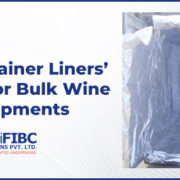What Are Insulated Shipping Container Liners?
Shipping temperature-sensitive items in insulated containers are essential for the transportation of food and non-food substances. You must safeguard your investment since you lose money if your items are harmed by temperature changes when they reach their designated places. You may prevent this issue, in addition to many others, by selecting the appropriate insulated bulk container.
Different Insulated Container Types
There are several varieties of insulated shipping containers as per different kinds of temperature-sensitive items.
- The Conventional Ice Totes
These containers frequently get used by wineries, food processors, and seafood processors. They have excellent temperature regulation because of their long-lasting, double-wall, foam-filled insulation.
- Ice Totes (Dry)
Produced with a special compounded-melt blend of FDA/USDA-approved low-density polyethylene plastic that provides impact strength and keeps frozen goods, such as dry ice and ice cream, frozen for a longer period of time.
- Merchandise/Display
Due to their mobility, they are excellent for transporting your items to farmer’s markets, grocery stores, vendor exhibits, etc. Without the assistance of a mechanical refrigeration system, these containers maintain the coldness of your food and beverages.
The Advantages Of Container Liners
Container liners are one of the finest investments you can make to safeguard your goods. Container liners offer unparalleled defenses and can protect your goods from a variety of potential harms.
- Container Liners Aid in Temperature Control
Consider the scenario when your items are particularly sensitive to temperature variations. Too much heat or cold might cause a product to decay, which lowers its effectiveness. Temperature exposure can make a product dangerous in some rare circumstances. You must thus be very careful to control the temperature of your shipping containers.
A container liner is an ideal remedy. They protect the container’s inside from any temperature fluctuations from the outside. In chilly settings, they keep the heat in. In hot climates, they shield the body from the sun’s heat and rays, keeping the interior temperature cool.
- Container Liners Prevent Environmental Damage
Ocean freight may get subjected to the elements due to severe rain, ocean waves, and even significant storms. Products can deteriorate and become contaminated by excessive moisture and salt from ocean water, which lowers their quality. In order to protect against these uncontrollable forces, you must ensure that your ocean liner container is sealed.
Liners for containers are a fantastic option. They have six walls of security and get made to fit neatly inside typical ocean liner containers. To ensure that nothing can get inside to jeopardize your goods, they completely get sealed and zip-tight.
- Make Sanitary Conditions a Priority
It is also another benefit of using container liners. Container liners line the inside of the container, creating a physical barrier that gets sealed off from any potential leftover components. A container liner’s inside is exceptionally hygienic, ensuring that your items won’t get harmed by unhygienic circumstances.
Why should you choose Fluid Flexitanks?
We at Fluid Flexitanks provide custom thermal liner solutions. We take pride in creating affordable and excellent quality shipping liners that can be reused. Our products prevent contamination and have the perfect moisture barrier.
If you are looking for insulated container liners for your business, contact us.










